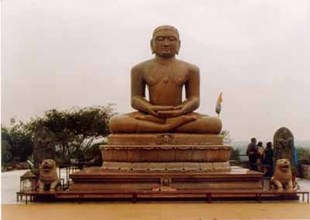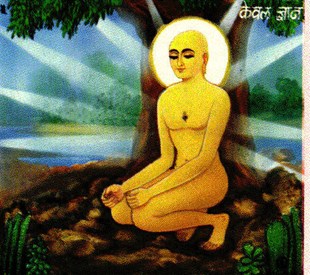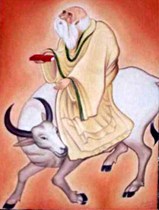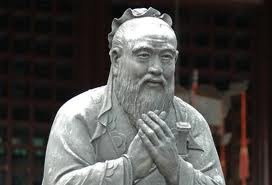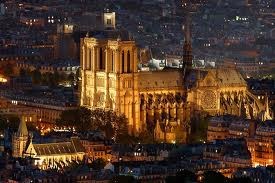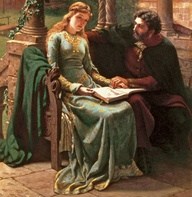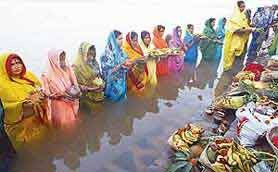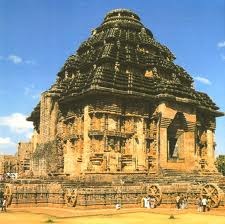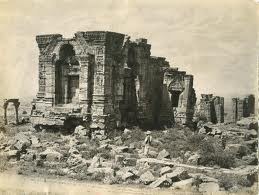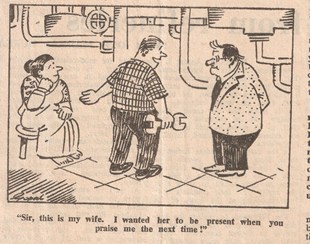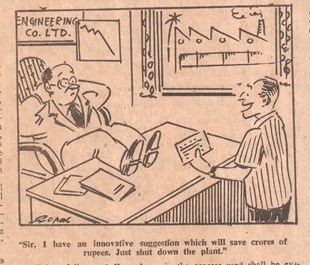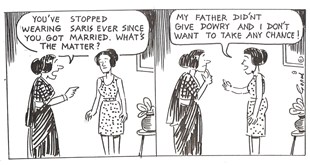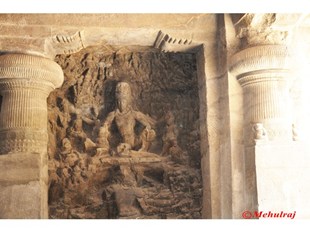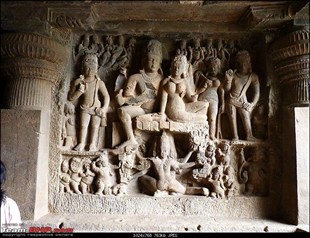V.S.Gopalakrishnan
Lord Rama, the seventh avatar, of the Treta Yuga, was straight as a wand and was devoted to one woman, his wife Sita. However, Lord Krishna, the eighth avatar, of the Dwapara Yuga, has been shown as a colourful personality with innumerable liaisons with women. Yet, the two avatars are equally popular in India. Rama sent away Sita based on some alleged rumours emanating from a dhobi but this story happened only in the Uttarakhand which was not originally part of Valmiki’s epic and is a later concoction.
Comparing Rama and Krishna, I am reminded of what some Southern musicians tend to say. They claim that Carnatic music is like Rama, straight and pure, whereas Hindustani music is like Krishna, colourful and not pure! Yet, unlike North Indians, South Indian men often carry Gods’ names and common amongst them would be Ramachandran, Ramanathan, Radhakrishnan, Balakrishnan etc! So, even the South is really unbiased while choosing Rama or Krishna.
KRISHNA AND RADHA
Krishna was married to Rukmini and Satyabhama. However, Radha, a gopi, was his consort. Like the divine status attributed to Krishna, the human avatar, Radha is also attributed a divine status, and the love between them was essentially divine and spiritual.
In the story of Krishna found in Mahabharata (estimated time: circa 3000-1000 BC) and Bhagavata Purana (circa 900 BC), the name of Radha, the favourite gopi, never occurs at all. It is stated that the young cow-herd Krishna spent a lot of time with gopis, the cow-herd girls, in Vrindavan. It is said that Skanda Purana mentions a few names of gopis and mentions Radha and Chandravalli as the most prominent amongst them and Radha as the very best.
It is only thanks to the Brahmin poet Jayadeva (Orissan, circa 1200 AD) that we have the epic Sanskrit poem “Gita Govinda” which has depicted Radha, the gopi, as a divine consort of Krishna, and has described their divine love. In fact, Radha has been given a higher divine status than that of Krishna, by Jayadeva. “Gita Govinda” became instrumental in giving a huge boost to the bhakti movement in India.
Jayadeva was born in the traditionally Krishna-adoring village of Kenduli Sasan near Puri, Orissa. He was known for his scholarliness, and was known to have mastered the Shastras and the Puranas at a young age. He married Padmavati, a court dancer. He was competent in the art of dances too. The reason Gita Govinda became popular in the whole of India was that it was traditionally and dramatically being performed in the Puri Jagannath temple which was a major pilgrim centre. The poetic work of Gita Govinda has been set to music, and each Ashtapadi (group of eight lines) is sung to a different raga. The Radha-Krishna theme from the epic poem dictates the Odissi dance form and has also influenced dance forms such as Bharata Natyam, Kuchipudi and Kathakali.
Obviously, Jayadeva drew his inspiration for the Krishna-Radha love story from Book 10 of the Bhagavata Purana. The said Purana, basically on the 10 avatars, consists of 12 cantos/books in all, totally running into 18000 verses, and the bulky book number 10 handles the adventures and lilas of the young Krishna in Vrindavan which includes the affairs with gopis. The gopis are all devoted to the young Krishna and they would abandon their work to be with him. Essentially this is a sort of spiritual longing for the divine kid.
Chaitanya (1486-1534) of Bengal gave an immense boost to the Radha-Krishna bhakti movement. He was born in District Nadia, West Bengal. He was called “Gaura” as he was very fair, and also called “Nimai” as he was born under a neem tree. He was raised as a Sanskrit scholar. As a youngster, he was given to chanting Krishna’s name. After a visit to Gaya, he ceased to be a scholar and became a fervent devotee of Krishna. To him, Krishna and Radha were just one unified entity. After becoming a sannyasin, he travelled all over India spreading the bhakti for Krishna. He spent his last 24 years at Puri, known for the Jagannath (Krishna) temple. His followers are called “Gaudiya Vaishnavas” and they regard him as an avatar of Krishna who combined in himself Radha too.
KRISHNA AND 16000 GOPIS
Here is an extract that I have lifted from the Net: “The Skanda Purana states that out of many thousands of gopis, sixteen thousand are predominant; and out of 108 gopis, eight are still more prominent; out of eight gopis Radharani and Candravalli are prominent; and out of these two gopis, Radharani is the most prominent. Because Radha possesses all the charm and sweetness, She is the better of the two.”
The Skanda Purana seems to depict the thousands of Gopis as serviteurs of Radha and Krishna, the divine couple; they decorate Radha and promote her togetherness with Krishna. When there is a dispute between Radha and Krishna, they would take Radha’s side.
The tenth book of Bhagavata Purana (Srimad Bhagavatam/S.B.) contains a very large description of Krishna’s exploits with the 16000 gopis and of his other exploits as a youngster in Vrindavan, although Radha’s name is not mentioned. This has been mentioned by me earlier. The gopis were obviously awe-struck with him as he could get rid of poison from Yamuna river, could tame the serpent Kaliya and perform other feats. Were the 16000 gopis married to Krishna?
The answer to the last question is a matter of interpretation of the relevant passages in the S.B. SB 10.59.42-43 is reproduced below:
It would be difficult to believe that Krishna lived simultaneously in 16000 households with the gopis. Obviously it has to be taken that he lived in their hearts. That was nothing but a spiritual marriage.
Krishna was only 10 years old when he left Vrindavan for Mathura, leaving the gopis behind. The love of the gopis for the boy Krishna in Vrindavan was obviously divine love.
KRISHNA AND RUKMINI
Rukmini, the daughter of the king of Vidharba, was in love with Krishna, the king of Dwarka. However, Rukmi, her brother, wanted her to marry his friend Sisupala. By a prior arrangement, Krishna kidnaps her when she had just finished a temple visit in Amravati. (I was an IAS trainee at Amravati and the temple is still there!). Rukmi tries to rescue her but Krishna defeats him in battle. Rukmini marries Krishna and becomes the Queen of Dwarka. The kidnapping and marriage are described in the Bhagavata Purana. In Puranas, Rukmini is considered to be the avatar (incarnation) of Lakshmi.
KRISHNA AND SATYABHAMA
While Rukmini was the Chief Queen, Satyabhama was Krishna’s second queen and second wife. Satyabhama is regarded as the partial avatar of Bhudevi (Mother Goddess). When the demon King Narakasura (ruling Pragjothishyapur, present Assam), defeated Lord Indra and abducted 16000 gopis, both Krishna and Satyabhama went over to fight him. Satyabhama had a special role in killing Narakasura in her capacity of an incarnation of mother goddess, since as per a boon Narakasura could not be killed by anybody excepting his mother. After releasing the 16000 gopis, Krishna “married” them to eradicate any tarnish from them.
The “tulabharam story” establishes that Rukmini and Krishna had a greater mutual love and devotion than what was between Krishna and Satyabhama. Satyabhama used to brag about her hold on Krishna, and Narada wanted to lay a trap for her with the idea of weighing Krishna against her jewellery. Satyabhama brought in her unlimited supply of jewellery and yet Krishna, seated on one side of the scale, could not be counterpoised. However, one tulasi leaf brought in by Rukmini did the trick when it was placed on the scale.
==============================================
Lord Rama, the seventh avatar, of the Treta Yuga, was straight as a wand and was devoted to one woman, his wife Sita. However, Lord Krishna, the eighth avatar, of the Dwapara Yuga, has been shown as a colourful personality with innumerable liaisons with women. Yet, the two avatars are equally popular in India. Rama sent away Sita based on some alleged rumours emanating from a dhobi but this story happened only in the Uttarakhand which was not originally part of Valmiki’s epic and is a later concoction.
Comparing Rama and Krishna, I am reminded of what some Southern musicians tend to say. They claim that Carnatic music is like Rama, straight and pure, whereas Hindustani music is like Krishna, colourful and not pure! Yet, unlike North Indians, South Indian men often carry Gods’ names and common amongst them would be Ramachandran, Ramanathan, Radhakrishnan, Balakrishnan etc! So, even the South is really unbiased while choosing Rama or Krishna.
KRISHNA AND RADHA
Krishna was married to Rukmini and Satyabhama. However, Radha, a gopi, was his consort. Like the divine status attributed to Krishna, the human avatar, Radha is also attributed a divine status, and the love between them was essentially divine and spiritual.
In the story of Krishna found in Mahabharata (estimated time: circa 3000-1000 BC) and Bhagavata Purana (circa 900 BC), the name of Radha, the favourite gopi, never occurs at all. It is stated that the young cow-herd Krishna spent a lot of time with gopis, the cow-herd girls, in Vrindavan. It is said that Skanda Purana mentions a few names of gopis and mentions Radha and Chandravalli as the most prominent amongst them and Radha as the very best.
It is only thanks to the Brahmin poet Jayadeva (Orissan, circa 1200 AD) that we have the epic Sanskrit poem “Gita Govinda” which has depicted Radha, the gopi, as a divine consort of Krishna, and has described their divine love. In fact, Radha has been given a higher divine status than that of Krishna, by Jayadeva. “Gita Govinda” became instrumental in giving a huge boost to the bhakti movement in India.
Jayadeva was born in the traditionally Krishna-adoring village of Kenduli Sasan near Puri, Orissa. He was known for his scholarliness, and was known to have mastered the Shastras and the Puranas at a young age. He married Padmavati, a court dancer. He was competent in the art of dances too. The reason Gita Govinda became popular in the whole of India was that it was traditionally and dramatically being performed in the Puri Jagannath temple which was a major pilgrim centre. The poetic work of Gita Govinda has been set to music, and each Ashtapadi (group of eight lines) is sung to a different raga. The Radha-Krishna theme from the epic poem dictates the Odissi dance form and has also influenced dance forms such as Bharata Natyam, Kuchipudi and Kathakali.
Obviously, Jayadeva drew his inspiration for the Krishna-Radha love story from Book 10 of the Bhagavata Purana. The said Purana, basically on the 10 avatars, consists of 12 cantos/books in all, totally running into 18000 verses, and the bulky book number 10 handles the adventures and lilas of the young Krishna in Vrindavan which includes the affairs with gopis. The gopis are all devoted to the young Krishna and they would abandon their work to be with him. Essentially this is a sort of spiritual longing for the divine kid.
Chaitanya (1486-1534) of Bengal gave an immense boost to the Radha-Krishna bhakti movement. He was born in District Nadia, West Bengal. He was called “Gaura” as he was very fair, and also called “Nimai” as he was born under a neem tree. He was raised as a Sanskrit scholar. As a youngster, he was given to chanting Krishna’s name. After a visit to Gaya, he ceased to be a scholar and became a fervent devotee of Krishna. To him, Krishna and Radha were just one unified entity. After becoming a sannyasin, he travelled all over India spreading the bhakti for Krishna. He spent his last 24 years at Puri, known for the Jagannath (Krishna) temple. His followers are called “Gaudiya Vaishnavas” and they regard him as an avatar of Krishna who combined in himself Radha too.
KRISHNA AND 16000 GOPIS
Here is an extract that I have lifted from the Net: “The Skanda Purana states that out of many thousands of gopis, sixteen thousand are predominant; and out of 108 gopis, eight are still more prominent; out of eight gopis Radharani and Candravalli are prominent; and out of these two gopis, Radharani is the most prominent. Because Radha possesses all the charm and sweetness, She is the better of the two.”
The Skanda Purana seems to depict the thousands of Gopis as serviteurs of Radha and Krishna, the divine couple; they decorate Radha and promote her togetherness with Krishna. When there is a dispute between Radha and Krishna, they would take Radha’s side.
The tenth book of Bhagavata Purana (Srimad Bhagavatam/S.B.) contains a very large description of Krishna’s exploits with the 16000 gopis and of his other exploits as a youngster in Vrindavan, although Radha’s name is not mentioned. This has been mentioned by me earlier. The gopis were obviously awe-struck with him as he could get rid of poison from Yamuna river, could tame the serpent Kaliya and perform other feats. Were the 16000 gopis married to Krishna?
The answer to the last question is a matter of interpretation of the relevant passages in the S.B. SB 10.59.42-43 is reproduced below:
"After all this, Bhagavan [Krishna] married those
women in different houses simultaneously, according
to the appropriate rites. The imperishable one
assumed as many forms as there were women.
He lived with them, without leaving, in those incomparable residences.
Krishna is immersed in His own pleasure, but He took pleasure with His
wives, while performing His household duties, just like anybody else.
He performs deeds that are beyond comprehension."
(SB 10.59.42-43)
women in different houses simultaneously, according
to the appropriate rites. The imperishable one
assumed as many forms as there were women.
He lived with them, without leaving, in those incomparable residences.
Krishna is immersed in His own pleasure, but He took pleasure with His
wives, while performing His household duties, just like anybody else.
He performs deeds that are beyond comprehension."
(SB 10.59.42-43)
It would be difficult to believe that Krishna lived simultaneously in 16000 households with the gopis. Obviously it has to be taken that he lived in their hearts. That was nothing but a spiritual marriage.
Krishna was only 10 years old when he left Vrindavan for Mathura, leaving the gopis behind. The love of the gopis for the boy Krishna in Vrindavan was obviously divine love.
KRISHNA AND RUKMINI
Rukmini, the daughter of the king of Vidharba, was in love with Krishna, the king of Dwarka. However, Rukmi, her brother, wanted her to marry his friend Sisupala. By a prior arrangement, Krishna kidnaps her when she had just finished a temple visit in Amravati. (I was an IAS trainee at Amravati and the temple is still there!). Rukmi tries to rescue her but Krishna defeats him in battle. Rukmini marries Krishna and becomes the Queen of Dwarka. The kidnapping and marriage are described in the Bhagavata Purana. In Puranas, Rukmini is considered to be the avatar (incarnation) of Lakshmi.
KRISHNA AND SATYABHAMA
While Rukmini was the Chief Queen, Satyabhama was Krishna’s second queen and second wife. Satyabhama is regarded as the partial avatar of Bhudevi (Mother Goddess). When the demon King Narakasura (ruling Pragjothishyapur, present Assam), defeated Lord Indra and abducted 16000 gopis, both Krishna and Satyabhama went over to fight him. Satyabhama had a special role in killing Narakasura in her capacity of an incarnation of mother goddess, since as per a boon Narakasura could not be killed by anybody excepting his mother. After releasing the 16000 gopis, Krishna “married” them to eradicate any tarnish from them.
The “tulabharam story” establishes that Rukmini and Krishna had a greater mutual love and devotion than what was between Krishna and Satyabhama. Satyabhama used to brag about her hold on Krishna, and Narada wanted to lay a trap for her with the idea of weighing Krishna against her jewellery. Satyabhama brought in her unlimited supply of jewellery and yet Krishna, seated on one side of the scale, could not be counterpoised. However, one tulasi leaf brought in by Rukmini did the trick when it was placed on the scale.
==============================================

